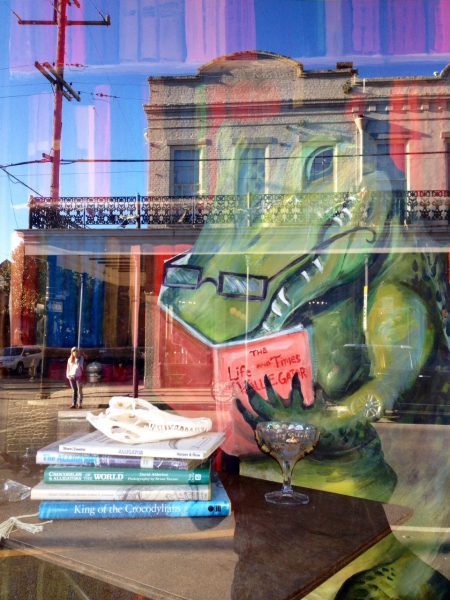This story falls in that ambiguous space between poetry and prose, and yet you drive plot with imagery so well. Is there something to be gained by labeling a piece this or that genre? Or is it limiting for the work?
I think I’ve gravitated toward flash because I love both poetry and prose, and flash can often comfortably straddle the line between them. In the writing process, I find that focusing on the craft of a certain genre can be helpful, and this may be especially true for me as an emerging writer. If I have a set of “rules” going in to a piece, like word limit or a certain structure, those boundaries can be freeing, allowing more risks within other aspects of the piece, like the language or narrative. I am not sure if, once a work is complete, something is gained by labeling it this or that genre, unless that label is helpful to the reader’s understanding and doesn’t limit the reach of the piece.
Similarly, the language is wonderfully poetic. “He told me he was finitely patient. I told him I felt flawlessly alone”: That is one line in particular that really felt nice to read out loud. Does there come a point, though, in which you feel you must sacrifice poetics to drive plot forward?
Thank you for your kind words about the language. I come to writing from a background of, among other things, studying foreign languages and literature, so, for me, much of the fun of writing is playing with words. I love the beauty of the sounds, and the way that language allows the creation of a new, audible picture. Writing that touches me the most balances language play with a meaningful narrative arc. I don’t think one must be sacrificed for the other; rather, there needs to be just enough of both.
You convey years of emotion in under three hundred words; how does narrative time move under this constraint, and can it do so successfully?
In many ways, it’s easy for narrative time to stride quickly within a very short word count: our minds traverse whole periods of memory within seconds, sometimes with just a few key details or images that emerge consciously. The narrative in this piece tries to leap between these contrasting pictures, which hopefully give the reader just enough to “see” the totality of this relationship. At least that is what I intended.
Words like “pretended” and “seemed” suggest that the relationship is artificial. But are the characters lying to their significant other or lying to themselves?
I definitely don’t think this relationship is artificial. The characters in this piece—as parents, as spouses, as survivors of loss— need each other; they need to believe they should be together, and this is the foundation of their commitment. Being committed to one another is about trying. Trying, in any situation, can sometimes involve telling well-intentioned and sincere stories: to yourself, and sometimes to others.
This piece both begins and ends with a sunrise, but it also ends with conflicting imagery of shattering and breaking. Do you see this as a new start for our couple? Or is it a breaking point?
The germ of this story started with the image of two people staring at the same night sky, seeing very different things. It sparked a metaphor for me, the idea of a couple with a complex history, who are still there, together, and very disconnected. It’s a long way from where the couple starts, in front of a sunrise, with all the potential of something new. The story may not explicitly create it, but I have hope for our couple. While I don’t think the point where the story leaves us is a new start, maybe it leads to the moment when they realize how far they are from one another, that they are headed for a breaking point. They have been through a lot, and from this realization, I can see them intentionally recommit and continue trying, together.



 The core workshop of SmokeLong Fitness is all in writing, so you can take part from anywhere at anytime. We are excited about creating a supportive, consistent and structured environment for flash writers to work on their craft in a community. We are thrilled and proud to say that our workshop participants have won, placed, or been listed in every major flash competition. Community works.
The core workshop of SmokeLong Fitness is all in writing, so you can take part from anywhere at anytime. We are excited about creating a supportive, consistent and structured environment for flash writers to work on their craft in a community. We are thrilled and proud to say that our workshop participants have won, placed, or been listed in every major flash competition. Community works.